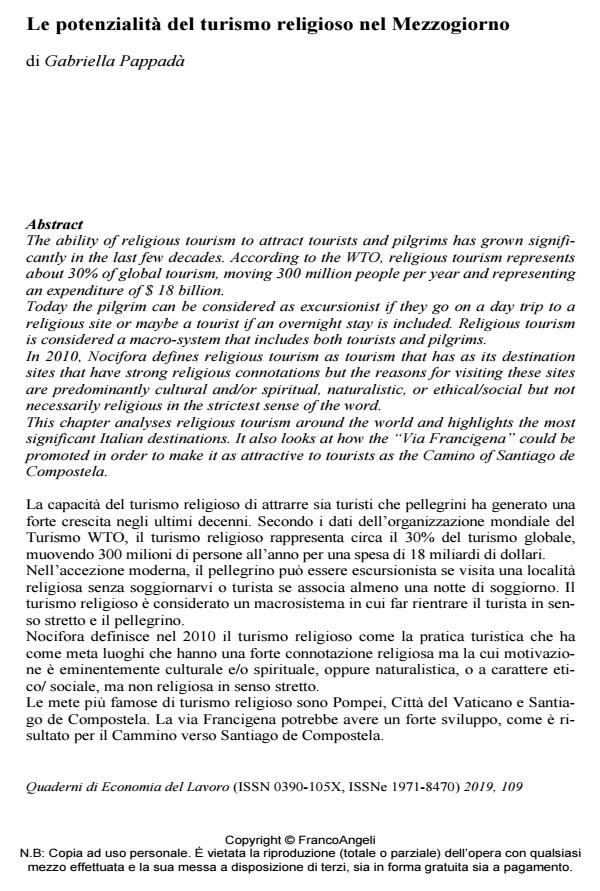Le potenzialità del turismo religioso nel Mezzogiorno
Journal title QUADERNI DI ECONOMIA DEL LAVORO
Author/s Gabriella Pappadà
Publishing Year 2020 Issue 2019/109
Language Italian Pages 13 P. 143-155 File size 180 KB
DOI 10.3280/QUA2019-109010
DOI is like a bar code for intellectual property: to have more infomation
click here
Below, you can see the article first page
If you want to buy this article in PDF format, you can do it, following the instructions to buy download credits

FrancoAngeli is member of Publishers International Linking Association, Inc (PILA), a not-for-profit association which run the CrossRef service enabling links to and from online scholarly content.
The ability of religious tourism to attract tourists and pilgrims has grown significantly in the last few decades. According to the WTO, religious tourism represents about 30% of global tourism, moving 300 million people per year and represent-ing an expenditure of $ 18 billion. Today the pilgrim can be considered as excursionist if they go on a day trip to a religious site or maybe a tourist if an overnight stay is included. Religious tour-ism is considered a macro-system that includes both tourists and pilgrims. In 2010, Nocifora defines religious tourism as tourism that has as its destination sites that have strong religious connotations but the reasons for visiting these sites are predominantly cultural and/or spiritual, naturalistic, or ethical/social but not necessarily religious in the strictest sense of the word. This chapter analyses religious tourism around the world and highlights the most significant Italian destinations. It also looks at how the "Via Francigena" could be promoted in order to make it as attractive to tourists as the Camino of Santia-go de Compostela.
Gabriella Pappadà, Le potenzialità del turismo religioso nel Mezzogiorno in "QUADERNI DI ECONOMIA DEL LAVORO" 109/2019, pp 143-155, DOI: 10.3280/QUA2019-109010